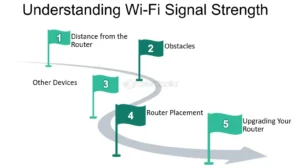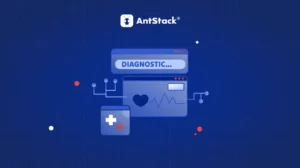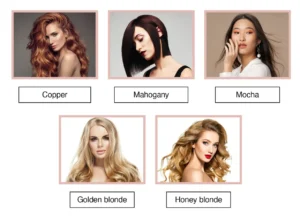Last updated on May 14th, 2025 at 11:07 am
As we move deeper into 2025, the B2B marketing landscape is undergoing rapid transformation driven by evolving buyer behavior, advanced technologies, and changing regulatory environments. Traditional lead-generation tactics are being replaced or significantly enhanced by intelligent automation, predictive analytics, and more human-centric engagement strategies. For marketing leaders and sales professionals aiming to stay ahead, keeping up with these changes is more crucial than ever.
This article explores the top five B2B marketing trends dominating Q2 2025, offering insight into what’s working, why it matters, and how forward-thinking companies are capitalizing on these shifts to build stronger customer relationships and accelerate pipeline growth.
- Hyper-Personalization Through AI and Predictive Analytics
Hyper-personalization is no longer just a buzzword, it’s a strategic imperative in B2B marketing. In Q2 2025, companies are investing heavily in AI-powered tools that allow them to deliver content, messaging, and product recommendations tailored to individual prospects or accounts in real time. With machine learning algorithms analyzing vast data sets from live line betting, firmographics, and technographics to behavioral signals and historical engagement, AI can predict what a prospect is likely to do next. This allows marketing teams to automate not only the “what” but also the “when” and “how” of content delivery.
Predictive lead scoring models, for example, help prioritize accounts most likely to convert, while AI-driven content engines dynamically generate email and web copy tailored to each visitor’s intent. What’s particularly interesting in Q2 2025 is the growing adoption of AI-powered intent platforms like 6sense, Demandbase, and ZoomInfo’s advanced behavioral tracking tools. These platforms are no longer used just by enterprise marketers but are becoming more accessible to mid-market teams thanks to API integrations with CRMs and marketing automation platforms like HubSpot and Salesforce.
- Zero-Party Data and Privacy-Centric Strategies Take Center Stage
The days of relying on third-party cookies are numbered, and B2B marketers are pivoting aggressively toward privacy-compliant data strategies. With increasing scrutiny around data usage and global regulations such as GDPR, CCPA, and emerging U.S. state-level laws, companies are now focusing on zero-party data information intentionally and proactively shared by the user.
In Q2 2025, zero-party data collection is becoming more sophisticated. Brands are using value-exchange experiences to gather insights: interactive assessments, preference centers, product recommendation quizzes, and gated content that offers genuine utility. These mechanisms help marketers gather rich contextual data that reflects a buyer’s intent, needs, and preferences without violating privacy norms.
- The Rise of Human-Centered Account-Based Marketing (ABM) 2.0
Account-Based Marketing continues to evolve, and in Q2 2025, we’re seeing a new phase of ABM: more human, empathetic, and value-driven. Instead of treating target accounts as mere data points, B2B marketers are investing in highly customized experiences that reflect a deep understanding of the individual stakeholders within each account.
This trend is driven by the realization that B2B buying decisions are increasingly complex, involving 6-10 decision-makers per account, each with unique concerns and information needs. ABM 2.0 emphasizes journey orchestration, coordinating multichannel touchpoints (email, social, paid media, events, webinars) across the full funnel in a way that aligns with the specific stage and persona involved. Innovative marketers are layering in emotional intelligence and storytelling to stand out.
- Video and Interactive Content Are the New Standards
While video has been rising for years, it’s now firmly entrenched as a standard in B2B content strategy not just for top-of-funnel awareness but also for nurturing and conversion. In Q2 2025, short-form, vertical videos are being adapted even for traditionally “serious” B2B brands, thanks to their performance across platforms like LinkedIn, YouTube Shorts, and even TikTok (yes, for B2B). But it’s not just about format, it’s about functionality.
Interactive videos that let viewers click through to deeper content, choose their path, or answer embedded questions are delivering better engagement and dwell times. Explainer videos with clickable CTAs, customer testimonials with embedded polls, and interactive webinars that shift from one module to the next based on audience response are changing the game.
- Revenue-Driven Marketing and the Fusion of Sales-Marketing Ops
The days of siloed marketing metrics are fading. In Q2 2025, revenue is the primary metric driving marketing decisions. This shift is leading to tighter alignment between marketing, sales, and customer success teams powered by shared KPIs, unified tech stacks, and collaborative planning.
Marketing teams are moving beyond MQLs (Marketing Qualified Leads) and toward more meaningful, bottom-line metrics like pipeline contribution, sales velocity, and customer lifetime value (CLV). Advanced attribution models using AI to track multi-touch journeys across platforms are helping CMOs understand exactly how different tactics contribute to revenue outcomes.
Conclusion
B2B marketing in Q2 2025 is defined by agility, intelligence, and empathy. Marketers are rethinking everything from data collection and personalization to how they measure success and align with sales. The top trends, AI-driven personalization, privacy-first strategies, empathetic ABM, immersive content, and revenue accountability are all interconnected by a shared imperative: deliver value to the buyer at every stage, in every channel. Staying ahead in this landscape means embracing new technologies while staying grounded in the fundamentals of relationship-building and relevance.










